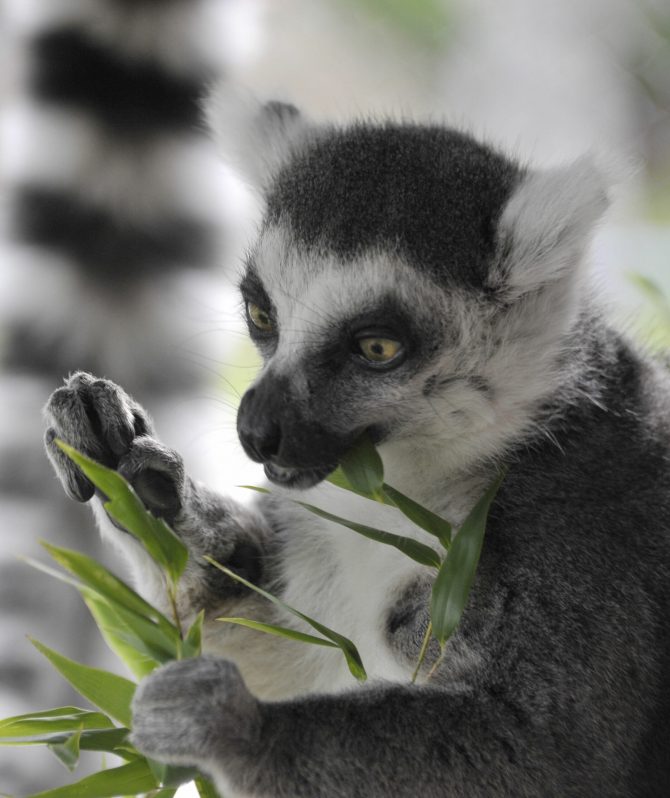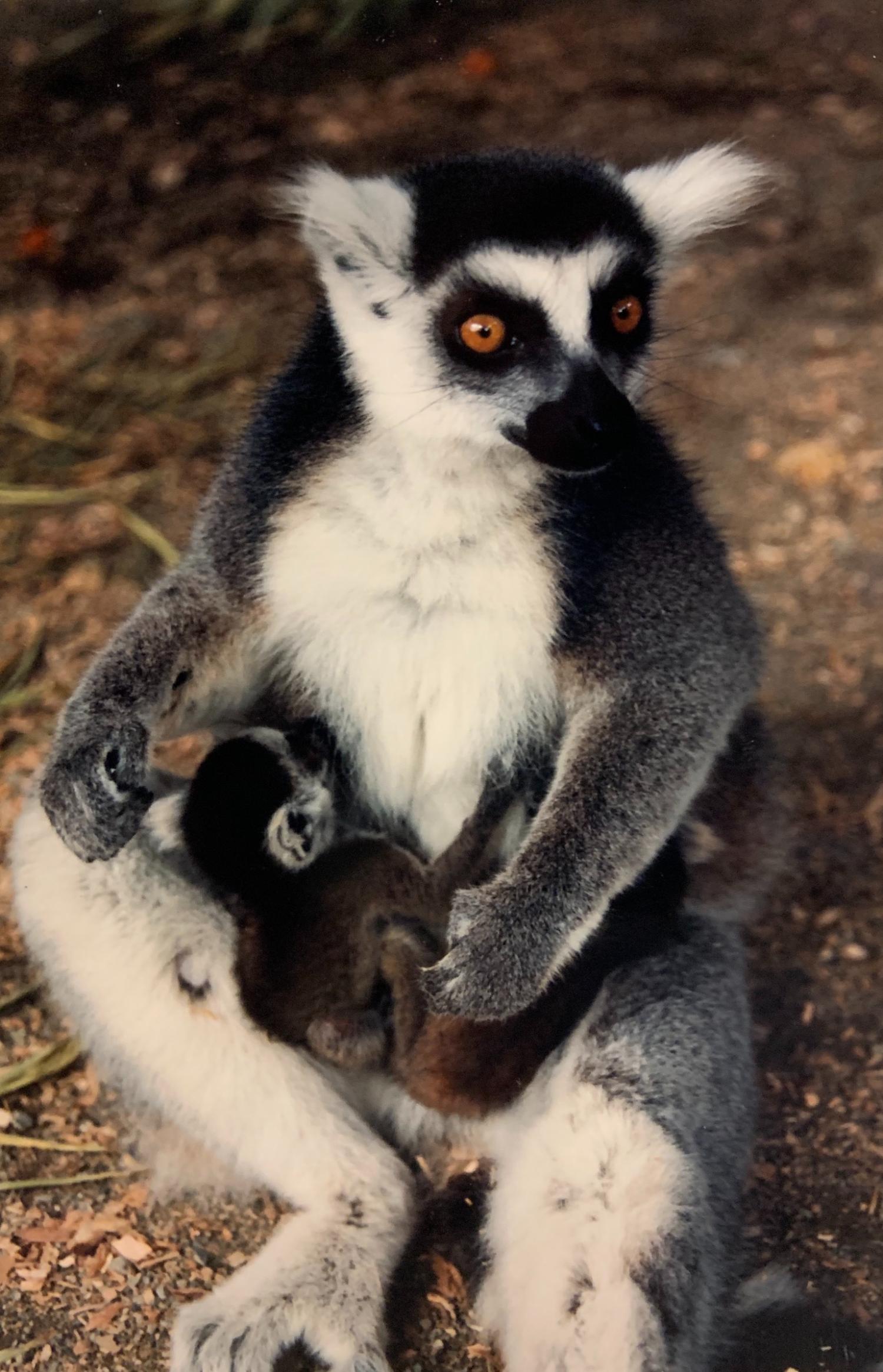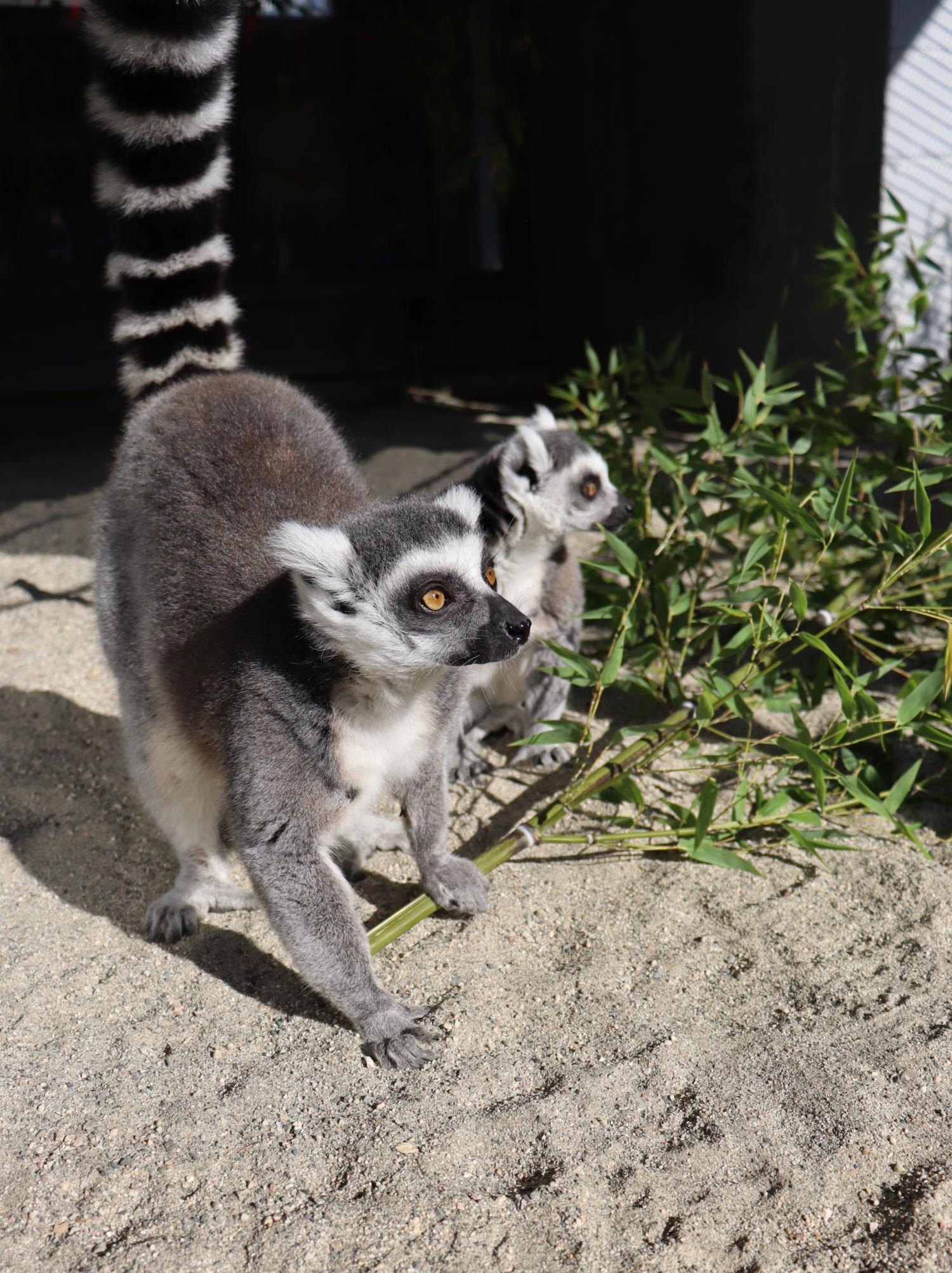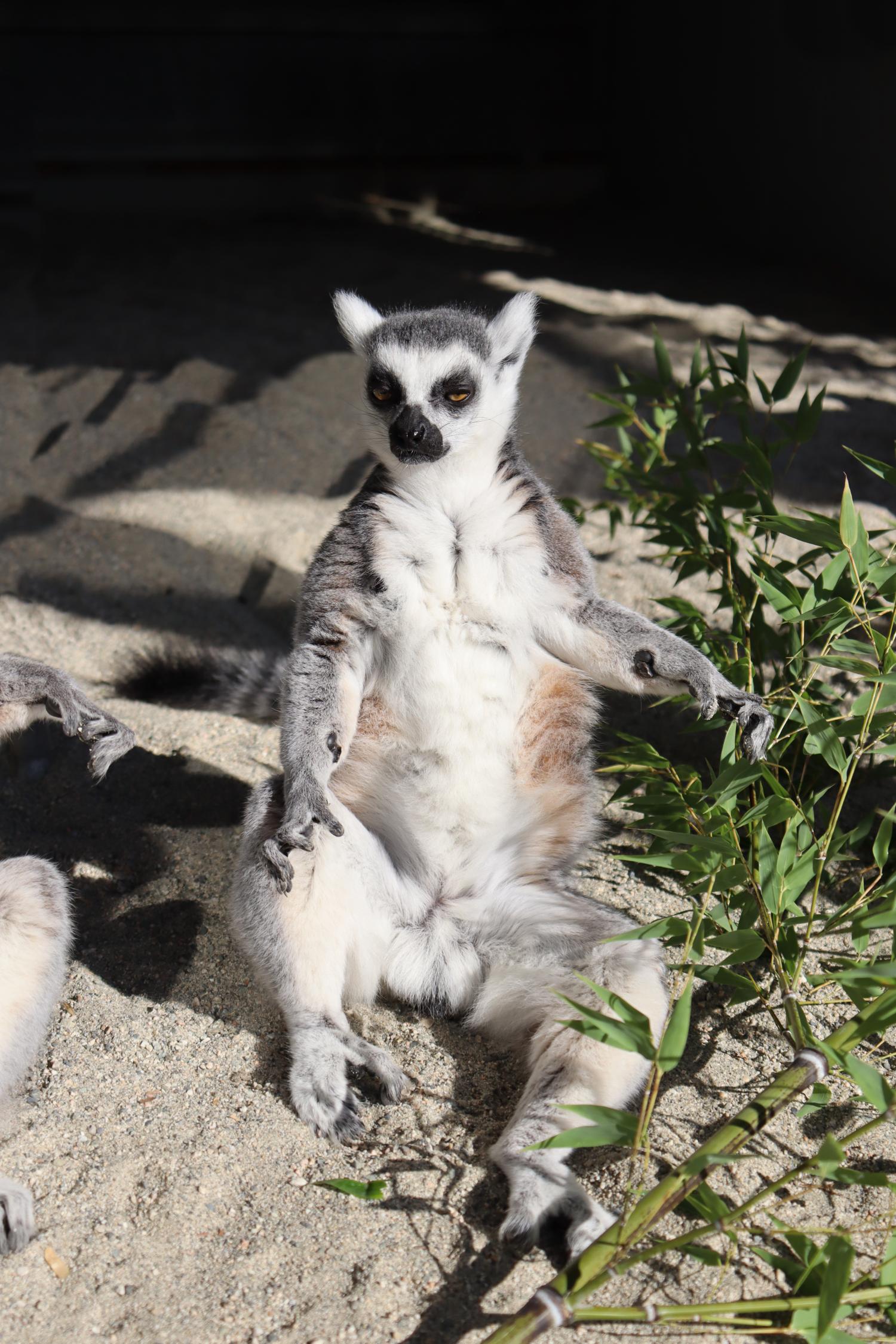The Animals
Ring-tailed Lemur
General Info
Common Name: Ring-Tailed Lemur
Scientific Name: Lemur catta
Physical Appearance: Bodies consist of a gray to light brown coloration with a white underside. Eyes are circled by black, triangular rings. The tail is ringed with black-and-white transverse bands along its entire length, with the tip being black. Males and females identical in appearance.
Length/Weight: 3-3.5 feet long head to tail, 5 to 7.5 lbs.
Lifespan: Up to 16 years in the wild. Up to 25 years in captivity

Environment
Range: Ring-tailed lemurs are found in southern and southwestern Madagascar. They are patchily distributed throughout the large area and population densities are highly variable.
Habitat: They inhabit many forests types throughout their range, including dry scrub and Didiereaceae forest, exposed rock, and subalpine, deciduous, gallery, and montane humid forests. Ring-tails have been found living at sea level to 8,530 ft. above. The species requires some forest cover and have been found to be unable to successfully resettle in secondary growth regions once they have been clear-cut.

Diet
Ring tailed lemurs typically follow an herbivorous diet, consisting of various ripe fruits, leaves, leaf stems, flowers, and exudates. A favorite is the tamarind tree, which produces fruits and leaves at alternating times of year. The tamarind tree is considered a keystone resource for ring-tailed lemurs, providing up to 50% of the total food consumed. Ring-tails have been considered opportunistic omnivores when needed; consuming spiders, caterpillars, cicadas, birds, chameleons, and even dirt from termite mounds. They do not seem to be constrained by water sources, although when available, will drink water daily.

Reproduction
Matriarchal females are dominant in the group, which means they have preferential access to food and choice of whom to mate with. Reproductive success is highly dependent on environmental conditions. Males and females reach adult size around three years of age. Reproductive age can vary between 2.5 to 4 years of age. Females have been found to give birth as young as two years old in captivity. Females are receptive for one to two days each year, and estrus may be as short as 6 to 24 hours. In the wild, breeding season lasts between 7 to 21 days in May. Gestation lasts 135 to 145 days.
Generally, ring-tailed lemurs give birth to one offspring, but twins can be a frequent sight if resources are plentiful. Infants initially cling to their mother’s belly, but after about two weeks, they can ride dorsally on their mothers back and begin to explore their surroundings independently. Weaning begins around 2 months of age and the infant is typically fully weaned by 4 months old. All adult females participate in raising the offspring of the group.

Conservation
Status:
Listed on IUCN: ENDANGERED
Population Trend: DECREASING
Efforts: Threatened due to habitat loss, hunting, and live capture due to the illegal in-country pet trade. Listed on Appendix I of CITES. Currently they are protected in five areas and are located in two national parks. Ring-tailed lemurs breed well in captivity, with over 1000 lemurs in zoos across the world. Captive breeding is crucial to maintain genetic diversity with the hope of reintroducing into the wild.

Important Facts

Considered the most terrestrial of all lemurs.
Ring-tailed lemurs preform a thermoregulation behavior termed “sun-worshiping”, in which the lemurs will congregate together to sit and warm their abdomen. This position maximizes the exposure of the less densely covered underside to the sun and has been observed to occur following cold nights or during cold mornings.
Ring-tailed lemur males “stink fight” with each other during mating season. They rub their tails with the scent glands located on their wrists, and then wave their tails at each other.
Sources:
IUCN: REDLIST
Duke LEMUR CENTER
National Primate Research Center, University of Wisconsin
LEMURS of Madagascar: Second Edition



